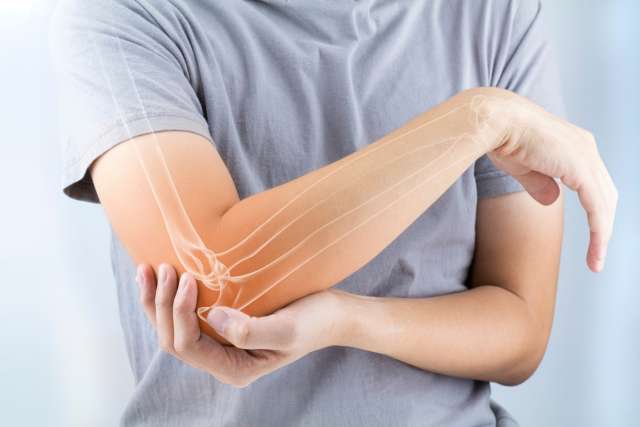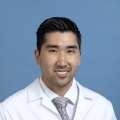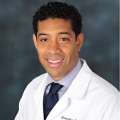Shoulder and Elbow Surgery
Our shoulder and elbow surgeons are among the most experienced in the region. High surgical volumes mean we routinely perform a wide range of procedures, including advanced and complex ones.

Why choose UCLA Health for shoulder and elbow surgery?
Our shoulder and elbow surgeons offer a wide range of advanced procedures. These physicians are among the most experienced and highly trained in the country, offering full-spectrum treatment for patients with shoulder and elbow injuries and disorders.
Highlights of our program include:
Advanced technology: Our surgeons use the latest technology to offer procedures with excellent results. For example, we use the newest implants available in shoulder replacement surgery. These technologies allow for less bone cutting and quicker recoveries.
The latest techniques: We offer a variety of advanced techniques for a range of conditions. For example, we use suture anchors during rotator cuff repair surgery that make the procedure faster. We offer many different types of grafting for larger tendon tears and may perform tendon transfers to offer mobility to patients who can’t move their arm.
Optimized recoveries: Dedicated physical therapists work with patients right away after surgery to promote optimal recovery. Anesthesiologists offer regional blocks for reduced postsurgical pain without the need for opioids.
Physician expertise: Our physicians are among the most experienced and highly trained in the country. High surgical volumes mean our elbow and shoulder surgeons routinely perform a variety of shoulder and elbow surgeries, including complex ones such as revision shoulder replacement and advanced shoulder and elbow arthroscopy. We are also published researchers who teach and train the next generation of physician leaders.
Conditions shoulder and elbow surgeons treat
We treat a range of conditions that affect the shoulder and elbow, including:
Avascular necrosis: Loss of blood supply to a bone, causing bone tissue to deteriorate
Biceps tendon ruptures: Partial or full tears of the biceps tendon, the strong band of tissue connecting the biceps muscle to the shoulder and forearm, just below the elbow
Elbow or shoulder arthritis: Inflammation and joint pain, commonly caused by a breakdown of cartilage, the spongy substance that cushions bones
Elbow contracture: A stiff elbow, often arising as a complication after a fracture, dislocation or surgery
Elbow instability: A feeling of looseness that leads to popping or catching in the elbow joint
Elbow or shoulder fractures: One or more broken bones in the elbow or shoulder
Frozen shoulder (adhesive capsulitis): A stiff, painful shoulder that has limited range of motion
Rotator cuff tears: A partial or full tear in the rotator cuff, the group of muscles and tendons that surround the shoulder joint
Shoulder dislocation: A condition in which the upper arm bone pops out of the shoulder socket
Shoulder and elbow surgeries we offer
Our elbow and shoulder surgeons perform a variety of advanced operations, including:
Shoulder replacement: The surgeon removes the damaged portion of the shoulder joint and replaces it with prosthetic parts. This treatment may be appropriate for patients with wear-and-tear arthritis (osteoarthritis) who have little to no cartilage in their joint but no damage to the rotator cuff tendons.
Reverse shoulder replacement: The surgeon replaces the shoulder joint with prosthetic parts, reversing the ball and socket placement. This treatment may be appropriate for patients with severe arthritis and rotator cuff damage, a completely torn rotator cuff or previously failed shoulder surgery. The reverse position restores mobility so that patients have more range of motion after surgery.
Revision joint replacement: Our surgeons specialize in revision replacement, or surgery for those who have had complications from a previous joint replacement.
Elbow arthroscopy: The surgeon makes small incisions and inserts a small, high-powered camera into the elbow joint. This allows the surgeon to view the inside of the joint and repair damaged structures.
Rotator cuff repair: Surgeons reattach the torn tendon to the arm bones, either using arthroscopy or open surgery.
Tendon transfers: The surgeon repositions a tendon by attaching it to a different bone or tendon. This restores function in cases of nerve injury, muscle injury or tendon rupture.
Meet our team
Our shoulder and elbow surgeons are highly skilled specialists. We offer advanced procedures using the latest technology and techniques. We treat patients, teach physicians in specialty training and research the newest care options.
Shoulder replacement surgery
Shoulder and elbow fractures
Shoulder and elbow soft tissue and arthroscopic surgery
Elbow replacement surgery
Contact us
Call to request an appointment with a shoulder and elbow surgeon at UCLA Health.
Find your care
Our surgeons use the latest technology to offer excellent results. Call to learn more about shoulder and elbow surgery.










